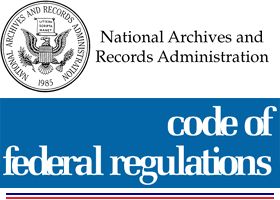 Today’s Tax Notes reports[fn1] that the IRS has announced that it will not release pretty much any new formal guidance (including revenue rulings and revenue procedures) for the foreseeable future.[fn2]
Today’s Tax Notes reports[fn1] that the IRS has announced that it will not release pretty much any new formal guidance (including revenue rulings and revenue procedures) for the foreseeable future.[fn2]
Why not? A confluence of an Executive Order and a January 20 memorandum. The EO, “Reducing Regulation and Controlling Regulatory Cost,” requires that, for every new regulation issued, two existing regulations be eliminated.
The January 20 memorandum further prohibits agencies from sending regulations to the Federal Register until they’ve been reviewed by an agency or department head appointed by Trump.
Whatever one thinks of the regulatory state, this lack of potential tax regulations and guidance is bad for taxpayers. Taxpayers have to comply with tax rules, even where Congress hasn’t drafted them clearly, or didn’t anticipate a particular set of events.
The most salient example from my experience: in December 2008, when the Bernie Madoff Ponzi scheme came out, investors wondered whether if it qualified as a theft loss and, if so, what they had to do to take a deduction and how much they could deduct.
In March 2009, the IRS stepped in to resolve the questions. It issued Rev. Rul. 2009-9 and Rev. Proc. 2009-20, which clarified that (qualifying) Ponzi scheme losses were deductible theft losses, and provided a safe harbor allowing individuals to deduct 95% of their loss.
Absent this guidance, taxpayers would have had to individually engage tax advisors to research and analyze and determine whether or not the Madoff losses were deductible. It would have been expensive, meaning only the wealthiest taxpayers could have taken the loss, and even then, taking that position would have been at least a little risky.
(At this point, it’s worth pointing out that the IRS will continue to issue private letter rulings, meaning taxpayers who have enough money will still be able to get comfort on ambiguous tax positions.)
Moving to regulations proper: the one-in-two-out rule may face a significant problem: to revoke a rule or regulation, an agency must go through the notice-and-comment processes.[fn4] Is that notice-and-comment rulemaking process also governed by the EO?
The EO is drafted broadly enough that it probably is, or at least, it is reasonably amenable to such a reading. And the EO doesn’t explicitly exempt regulations to revoke regulations from the scope of its one-in-two-out rule. It seems reductio ad absurdum, but a plain reading of section 2 of the EO requires this result. Under section 2,
Unless prohibited by law, whenever an executive department or agency (agency) publicly proposes for notice and comment or otherwise promulgates a new regulation, it shall identify at least two existing regulations to be repealed.[Emphasis added.]
So every time an agency moves to revoke a regulation, it creates a new regulation, which itself requires revoking two more regulations. Essentially, regulation death will spiral exponentially, until there are no regulations left.
No doubt the Trump administration drafted the EO sloppily, and didn’t anticipate this spiraling. And I’m sure it didn’t think about the fact that some regulatory regimes are helpful to business.[fn4] That said, even if you believe that environmental and business regulations are entirely and completely bad and should be cabined, the breadth and sloppiness of the EO and the memorandum are harmful taxpayers broadly.
[fn1] Subscription required. Alternatively, you can get the article on Lexis at 2017 TNT 29-1.
[fn2] It will continue to release routine guidance, like updated interest rates and updated mileage allowances.
[fn3] It’s on the tenth of the eleven pages of the pdf.
[fn4] I mean, maybe it was a malicious attempt to destroy the regulatory state, but a friend recently introduced me to Hanlon’s razor, which probably describes Trump’s adventures with regulation better.

This is a ridiculous state of affairs. You’re absolutely right that a lack of public guidance is bad for taxpayers.
LikeLiked by 1 person
Well explained both the executive order itself and potential for mischief. I especially appreciated the possibility that the Executive Order might create a mythological Hydra – for every revoked regulation must revoke another two. SNL where are you?
LikeLiked by 1 person
The one minus two order is strange, but is the moratorium on new regulations anything unusual for a new Administration? Isn’t that why there’s a rush to get them out before Inauguration Day? Also, if it’s just guidance rather than notice-and-comment regulation, we wouldn’t want to give taxpayers interpretations and policies that will be reversed in three months by the new agency heads.
LikeLike
I honestly don’t know. I don’t remember any moratorium on Treasury Regulations in early 2009—in fact, the IRS guidance I referred to in the post happened just after the Obama presidency started. Did the IRS and Treasury stop providing guidance When Bush became president? I’d be surprised if they did, but it’s possible, I suppose.
LikeLike